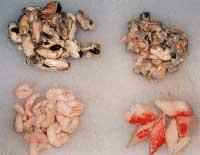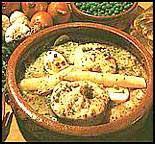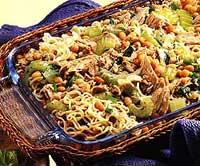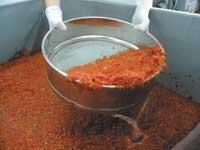Safer and more prepared meals
2002/09/23 Atxotegi Alegria, Uhaina - Elhuyar Zientziaren Komunikazioa
Research in the field of food conservation depends on the characteristics of the final product of the process to be obtained. Research has focused on two main directions: on the one hand, non-thermal treatments such as high pressure, pulse light, electrical pulses, irradiation, the use of adapted atmospheres and biopreservatives have been studied; and on the other hand, improved heat treatments such as ohmic heating or microwaves.

At the moment, AZTI uses two methods: innovative pulsed light technology and vacuum cooking.
Pulses of light
It is a method that emits high intensity white light pulses (20,000 times more intensity than sunlight reaching the earth's surface, between 0.001 and 50 J/cm 2) or reflections. This special light is applied to food in a very short time (less than one millisecond).
At AZTI this technology has been tested with hake fillets ( Merluccius merluccius). AZTI scientists discover that the more light they emit, the less mesophilous and psychotrophic aerobes there are. From the light shine 25, that is, with an energy of 38 J / cm 2, the amount of these aerobes is reduced by 90%, without any sensory alterations.
This technology can be used with a wide variety of foods, being applied in lipids such as translucent products of water, juices or liquids, that is, in products that let the light pass. Numerous solid products have also been tested and currently, both in France and Belgium, work with this method.
Without having to cook...
The pre-cooked product is vacuum packed and prepared inside. The heat treatment is usually less than 100ºC (equivalent to pasteurization) and is then introduced in a rapid cooling phase until the storage temperature in the refrigerator is reached. This technique, compared to conventional thermal treatments, has as main nutritional and aspect advantages the lengthening of the market life of the product (20-21 days), the reduction of cooking techniques (10% in fish products) and the possibility of cooking multiple menus at the same time (being packaged foods can be heated in the same oven without mixing odors and tastes). Vacuum cooking is a light but sufficient treatment to eliminate psychotrophic pathogens (Listeria monocytogenes, for example) that have not been generated by spores. In addition, the cooking of the packaged food prevents the risk of contamination.

The company AZTI has obtained very good results with cold vacuum fishing products: Chilled cooked seafood of 15-20 days, verdel and jurel prepared with several sauces. The precooking of the fish improves the appearance of the product and prevents the appearance of the exudate of the final product. On the other hand, the sauce that is added to the fish before pasteurization improves the appearance and flavor of the final product.
But the date of conservation of vacuum cooked products is 28 days, as persistent pathogenic microorganisms may appear, especially the bacterium Clostridium botulinum. In addition, when distributing or selling products, the temperature needed to keep them in good condition is often lost.

Gai honi buruzko eduki gehiago
Elhuyarrek garatutako teknologia






